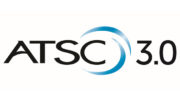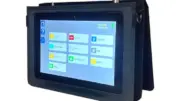It’s been a while since there’s been any news about ATSC 3.0, the so-called next generation broadcast standard. Despite a steady flow of positive PR from trade organizations, it seems the only news you hear from consumers is bad news.
Let’s recap just a little bit, before revealing the latest bit of frustration.
The long slog
The last time there was any positive news about ATSC 3.0 was way back in 2017. Back then, I reported that the FCC made a rule change that threw away decades of precedent. Historically, if you broadcast a TV signal in this country, every TV had to be able to receive it. That’s why we went through a massive converter box coupon program in the ’00s. However, in 2017 the FCC decided that test broadcasts of ATSC 3.0 could start up as long as the content was the same as it was on regular channels.
Very little happened with that other than a few cities setting up some test transmitters. 2020 was going to be the big breakout year for ATSC 3.0. Let’s just say 2020 had a different idea of what it was going to be. I hardly think I need to go into more detail than that.
As 2022 dawned, the ATSC 3.0 folks crowed about how this would be their year, and how more cities would be signing on. And, to be fair, more cities did sign on.
The Washington problem
Any real adoption of ATSC 3.0 will require an act of Congress and a long transition period. Broadcasting is different from things like Wi-Fi and Bluetooth because the airwaves used for broadcast are designated by Congress to serve the public.
To date there has been no talk of adopting ATSC 3.0 formally. None. This makes it pretty much impossible for the industry to make its deadline of full adoption by 2025. At this point you would have to think that 2030 is a much better number, if it’s going to happen at all.
And now, the good news (ha!)
XDA Developers report that it’s possible that every single ATSC 3.0 device in use today will become obsolete soon. Why? Because a big part of ATSC 3.0 is encryption. Those pesky content providers don’t want you making pristine digital copies of 4K content they send you over the air. So, the plan has always been to start encrypting broadcasts when the technology was ready. At the moment, all ATSC 3.0 broadcasts are unencrypted. None of the current reception equipment, whether TVs, receivers, or anything else, is set up to use encryption, because it wasn’t done being developed.
This means that as soon as ATSC 3.0 broadcasts start using encryption, sometime this year, every single piece of ATSC reception hardware could be permanently useless. At least one manufacturer has said that its tuners could not be upgraded to use encryption, and I have a feeling that’s an industry-wide problem.
I suppose the good news here is that there is so little ATSC 3.0 hardware out in the field that most people won’t be affected.
Not terribly surprising but…
Remember that ATSC 3.0 is still in the test phase. It’s not supposed to be there for regular folks to use. Still, a dedicated cadre of believers out there, the kind of folks that Solid Signal caters to, have invested serious money into ATSC 3.0. A typical receiver can run you well over $300.
Early adopters are used to expensive hardware becoming obsolete, of course. It’s nothing new. This isn’t even the worst instance. If you bought a first-generation flat TV for over $20,000, it didn’t support HD. If you bought one a few years later, it was plasma technology that burned images into the screen. The next generation of TVs didn’t support 1080 resolution. In each case, you ended up with an expensive boat anchor.
Cards on the table
Will we ever get ATSC 3.0 wide adoption? It’s beginning to look less likely. I’ve said before that if this is handled the wrong way it will just drive people away from antenna TV. Encrypting signals and making receivers expensive isn’t a good option for regular folks. Congress could step in like they did before and give folks money to buy converter boxes. But, let’s be honest here. Congress is a different place than it was in 2005, the last time this all happened. I just don’t see it working out this time.
ATSC 3.0 may simply end up being a dead end, like other TV technologies of the past. Or it may happen but be so late that the market barely notices. Either way, the news today isn’t helping.




